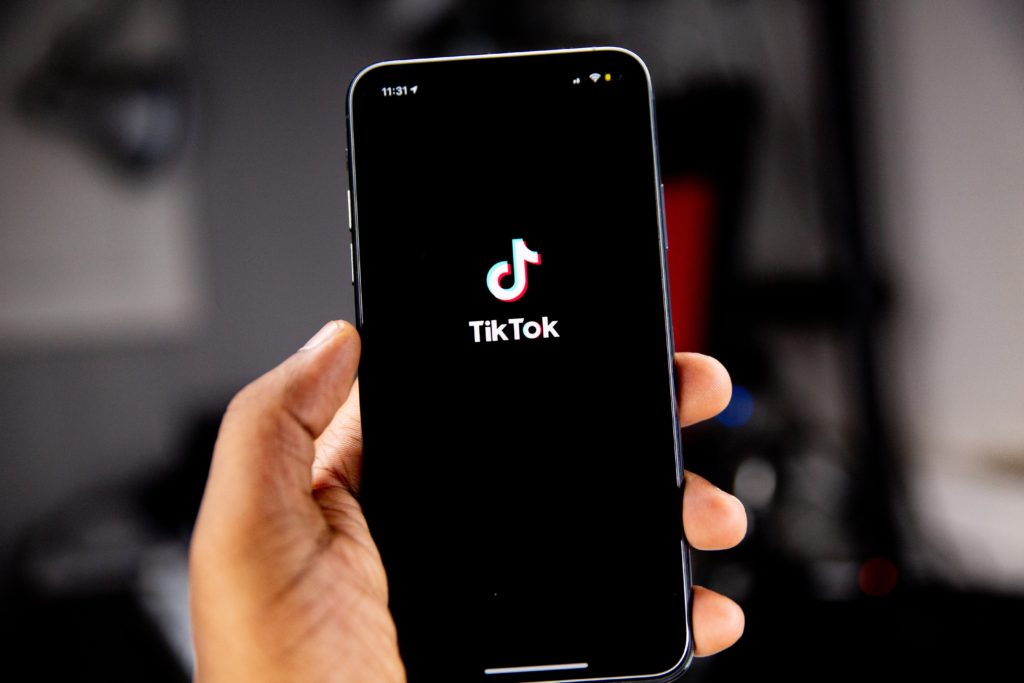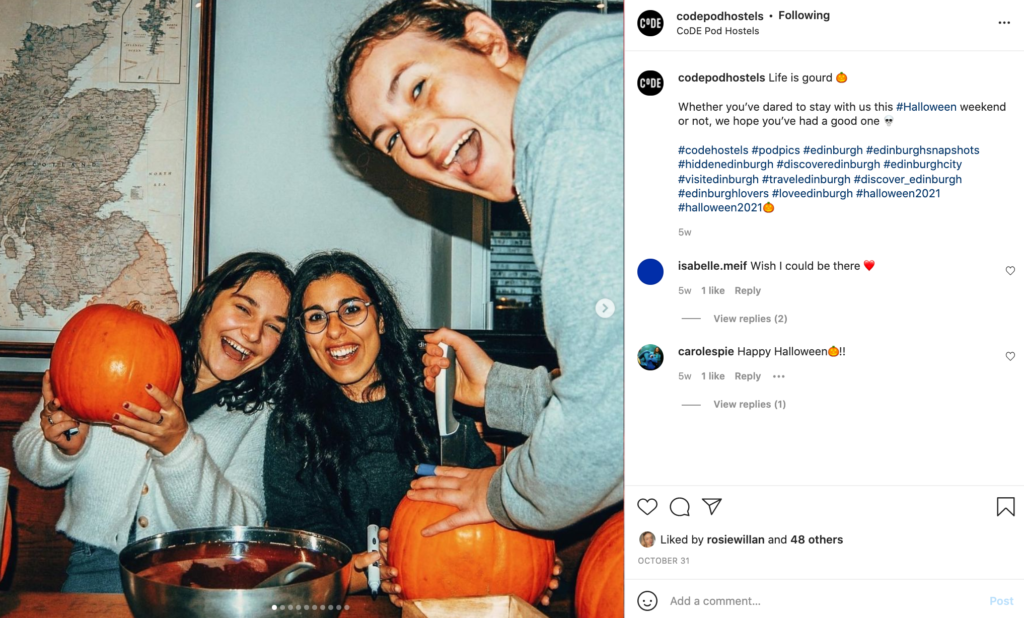If there is one thing that is guaranteed with marketing, it’s that it is constantly evolving.
With rapidly changing online behaviour and the emergence of new platforms and features on what can feel like a monthly basis, we understand it can be hard to keep up.
Whether you’re a hotel looking to drive direct bookings or a coliving space aiming to grow your waiting list, keeping track of new marketing trends is a must if you want to stay ahead of the competition.
To help you with that process, our team has put together this handy guide on the need-to-know hospitality marketing trends for 2022. Let’s dive in…
1. 2022: the year TikTok takes over
Let’s tackle a big change first – TikTok will soon grow to be the most popular social media platform globally, having already taken the world by storm and passed the 1 billion user mark back in September.
Despite the platform’s meteoric rise to success, many hospitality brands have been slow on the uptake – but if your brand doesn’t establish a presence on TikTok soon, then we guarantee you will miss out on real business returns.
Right now as the platform remains in its relative infancy, there are huge opportunities for growth that hospitality brands should be capitalising on. The handful of hospitality brands that have started to invest time and resources into TikTok have seen big brand awareness benefits, often with very little advertising investment.
There are many differences between TikTok and other social platforms to be aware of before you dive in – if you want to know how your hospitality brand can make a real impact on the platform, have a read of our hotel marketing guide for TikTok (or get in touch to see how we can support you through our TikTok management service).

2. Short-form video content will reign supreme
Demonstrating TikTok’s reach and influence beyond its own platform, short-form video has seen a boom in popularity which is set to continue into 2022. This has led to other platforms adopting new features including the massively popular Instagram Reels feature and YouTube Shorts. It’s clear that the majority of users are favouring these short, snappy clips over longer-form video content.
Why? Well, short-form videos – that run at around 2 minutes 30 seconds or less – tend to align with the fast-paced nature of social media channels (and the ever-shortening attention spans of social media audiences). They give users a new way to consume information, stay informed and be entertained in a format they prefer – in fact, stats from Hubspot show that 72% of consumers favour video over text when it comes to brand marketing.
When well-executed, short-form video provides hospitality brands with a new medium to strengthen their community, showcase their experiences and reach audiences in ways that were not possible before. User-generated content, behind the scenes snippets and informative videos all work well in this format.
Another great thing about short-form video content is that you don’t need to pay a professional videographer for this content – you can get your onsite teams involved and in on the action instead. When collecting video content to be edited into these formats, our team at Stay the Night works very closely with our client’s teams on the ground to guide them on what kinds of clips to gather before we edit and share with their audience. This collaborative approach is especially effective as it ensures the content we put out is authentic and really reflects the onsite experience on offer to guests and members.
3. Building a strong online community is critical to your success
There’s no denying that community has become something of a cliché in the hospitality world, especially over the past year – but how many companies are going beyond this buzzword to really create engaged communities both onsite and online? These are the brands that will stand out and remain resilient as we move this year and beyond.
So often, we see hospitality brands who strive to put community at the heart of their onsite experience but fail to build a loyal, engaged community online through their marketing efforts. Consumers see your marketing channels as an extension of your real-world experience – a place where interactions and two-way conversations can take place – and it’s important that your marketing team adopts the same ethos.
It’s also important to make the distinction between audience and community clear – just because your brand has thousands of followers on social media or a huge email list doesn’t mean those people are automatically part of an engaged brand community.
When done right, community marketing is a win-win for both your business and your audience. It contributes to your business objectives – for example, boosting brand awareness, growing your audience and ultimately increasing revenue – while also enriching the user experience for those who engage with your brand through your marketing channels. It also offers you a better insight into your customers and what they are seeking from brands like yours.
For a closer look at this topic, you can read our introduction to community marketing for hospitality brands.
4. The future of content marketing goes beyond blog posts
You may have heard the phrase “every company is a media company” and this has never been more true than it is today.
Blog posts are still a great tool to have in your marketing mix – especially when it comes to SEO and driving web traffic – but your content marketing strategy should now include a much broader range of activities. The term ‘content marketing’ encompasses elements like video series, downloads, podcasts, interviews and music playlists.
While the concept has evolved, the challenge remains the same for hospitality brands – creating compelling content that resonates with your specific audiences across multiple platforms and devices.
Content marketing must be entertaining, original and community-focused if it is to stand out. This means creating customised content specific to your target audience’s interests, needs and culture. Don’t just aim for mass appeal – focus on authenticity instead.

5. Paid advertising will continue to change rapidly
Paid advertising on social media was dealt a blow last year when Apple introduced the iOS 14 update which allowed iPhone users to opt-out of iOS tracking – a move that negatively affected remarketing campaigns and lookalike audiences. In order to continue to deliver high ROI for our clients, our team had to devise creative new strategies to get around this change.
Now the dust has settled, this isn’t the only change we’re seeing in terms of paid advertising. This year, we can expect to see more automation across all paid advertising platforms including social media ads and Google Ads – the trick will be experimenting with different strategies to use automation as effectively as possible.
Platforms like Instagram and Facebook are again having to keep pace with TikTok when it comes to advertising – trends show that users are more receptive to ads on TikTok, stating that they’re “more inspiring and enjoyable” than ads on other platforms. In line with this, ad creative that blends more seamlessly into social media feeds is the way to go. And, unsurprisingly, video ads will continue to lead the way in terms of popularity and performance with a huge 90% of people saying video helps them to make a purchase decision.
6. Influencer marketing finally comes of age – and should be integrated across your channels
With social media platforms investing in creator tools and funds (you guessed it – TikTok leads the way again with their Creator Fund and Marketplace), the professionalisation of the influencer marketing industry is already well underway.
In 2022, the question is no longer ‘should our hospitality brand work with influencers?’. Instead, you need to be considering the best influencer strategies for your brand and what percentage of your marketing budget you can invest in these partnerships.
Our top tip? Nurturing long-term relationships with influencers who share common values with your brand is the way forward. Ongoing partnerships – rather than one-off campaigns – are mutually beneficial and allow trust to be built which makes way for creative freedom that improves campaign quality in the long run. When it comes to selecting these partnerships, it pays to think outside of the box – a few years ago, hotels may have worked exclusively with travel influencers but today things have changed. Your campaigns can tap into communities around wellness, remote work and even utilise comedy with great success.
To get the most out of our client’s influencer marketing campaigns, we also integrate campaign creative with other aspects of their marketing mix. Take paid advertising as an example – when comparing the performance of influencer-led creative with your own creative, you can determine how this impacts the bottom line.
And while it should go without saying, diversity and representation is the standard in today’s influencer campaigns. Not only are your audience savvy – and likely to rightfully call you out if campaigns are a whitewash – but you will miss out on huge amounts of creativity if you don’t ensure your influencer marketing strategy sees everyone represented.
7. Lo-fi content will continue to grow in popularity
The trend for lo-fi content isn’t new, but it’s very now – and we predict it will grow to be even more widespread in the year ahead. So, what exactly do we mean by lo-fi? Lo-fi stands for low fidelity – that is, images and videos that are unpolished with minimum production and a DIY look and feel.
To some degree, the style evolved out of necessity – during the pandemic, marketing budgets were slashed and brands needed to deliver content at a low cost and with less production. Luckily, this type of content resonates with consumers – especially younger generations whose social feeds are becoming far less polished than their predecessors.
When it comes to hospitality brands creating and sharing lo-fi content, there are a number of benefits to both your community and your bottom line. First of all, people trust this type of content more than the highly edited equivalent that you might find on your website as it often appears more authentic and ‘in the moment’. This is demonstrated not only by the success of lo-fi content on organic channels but also in lo-fi content outperforming highly polished content in digital ad campaigns.
Another big bonus is that lo-fi content production comes in at a fraction of the price of high-quality photos and videos. However, there are some caveats here. As there is less focus on stunning visuals and editing, your storytelling and creativity needs to shine through and this may require some out-of-the-box thinking to make your content stand out.
One good tip is to co-create with your brand community by encouraging and resharing user-generated content that ticks these boxes. This type of content is powerful in building trust with your audience as it helps give them a glimpse of your onsite experience through the eyes of their fellow guests or members.

8. Email marketing will become more personal and interactive
In line with the trends we’ve already mentioned around content and community, email marketing is also set to undergo some significant changes this year.
Static, text-heavy emails simply aren’t cutting it in anymore – if you want your subscribers to stay on board, then you need to produce email content that is community-driven, engaging and interactive.
In fact, interactivity is one of the top trends of 2022 that will help to improve your email marketing performance. Interactive emails can include elements like animations and GIFs, embedded media, image carousels, games and quizzes. This is a great way to keep your audience engaged and stand out from the competition.
The use of automation in email marketing will also continue to grow. For our hotel and hostel clients, we create automated emails for each stage of their customer booking journey. For coliving or coworking clients, we do the same when it comes to their member onboarding journey. We use data to personalise these mailers which results in higher open and click-through rates. Personalising emails where possible is especially important in hospitality email marketing because it can help you create a connection with your guests or members before they arrive, making them feel valued and bridging the gap between the online and onsite experience.
Content-wise, your emails should read more like mini publications rather than a list of offers. Of course, you want to include incentives, but above all people want to see valuable and interesting things in their inbox so be careful not to overshadow this with selling.
9. Investing in social media customer service and community management is paramount
One trend that’s continued to gain traction in the past few years is the increase in demand for efficient customer service on social media channels. Between (multiple) lockdowns and cancelled bookings, consumers have never had more urgent questions for hospitality brands than now. As a result, many of your customers turn to social media to get quick answers to their questions and problems rather than speaking on the phone or via email.
Recent research conducted by Gartner estimates that 60% of all customer service requests will be managed by digital channels by 2023. Yet despite this increase in demand, many hospitality brands are still failing to offer effective customer support via their social media platforms. If you’re yet to implement a customer service strategy on social media, then now is definitely the time. Of course, we recognise that it can be time-consuming to constantly keep up with messages and comments on social media. That’s why we offer customer service and community management as a built-in element of our social media management service.
What about the metaverse?
By now, you probably know that Mark Zuckerberg has rebranded Facebook to formalise the company’s focus on the metaverse. In simple terms, the metaverse is a series of shared, virtual worlds where you can interact with others through an avatar. It’s an immersive digital experience that is created by the convergence of technologies including virtual reality, augmented reality and artificial intelligence.
While it’s a little too early to include this in a trends report for 2022, we wanted to touch on what this might mean for hospitality brands and their marketing.
In the first instance, the metaverse is likely to play a role in the early, top-funnel phases of a customer’s journey – for example, in the not-so-distant future potential guests or members will be able to virtually check out your sites ‘in person’ and even interact ‘face to face’ with staff before booking.
While the impact on the sector won’t be immediate, there will come a time when hospitality companies need to incorporate the metaverse in order to stay relevant to their audiences. As more and more people spend time in these virtual spaces, they will become an increasingly important channel for brand building, marketing and community engagement.
We’ll be keeping a close eye on this exciting area – watch this space.



